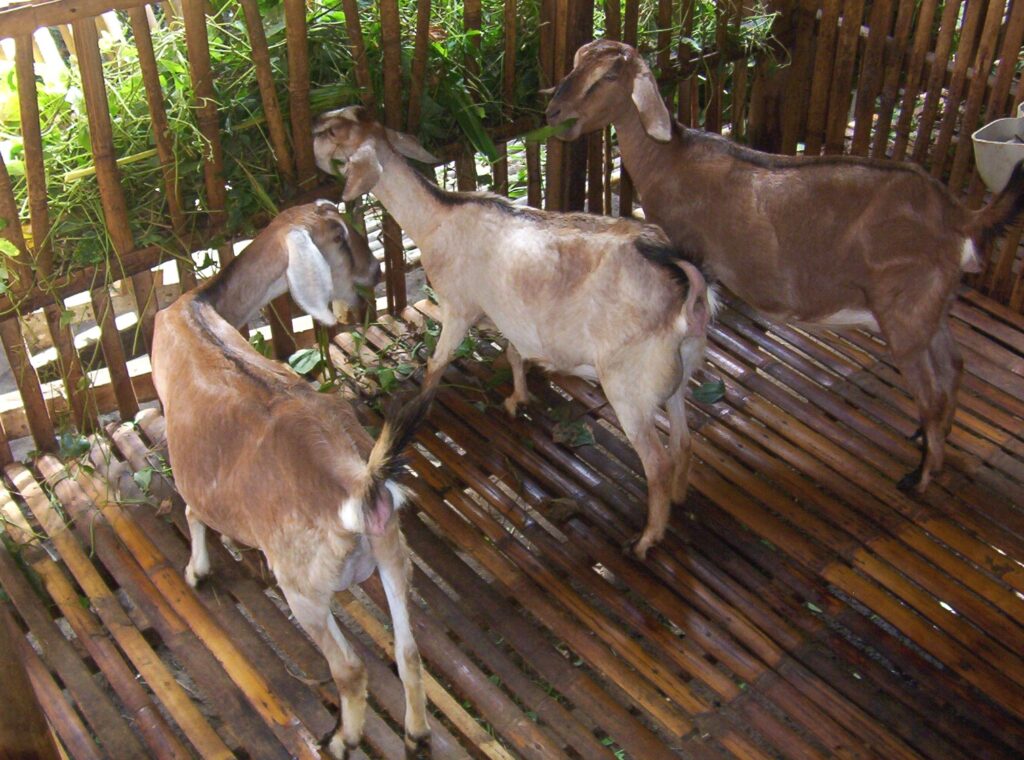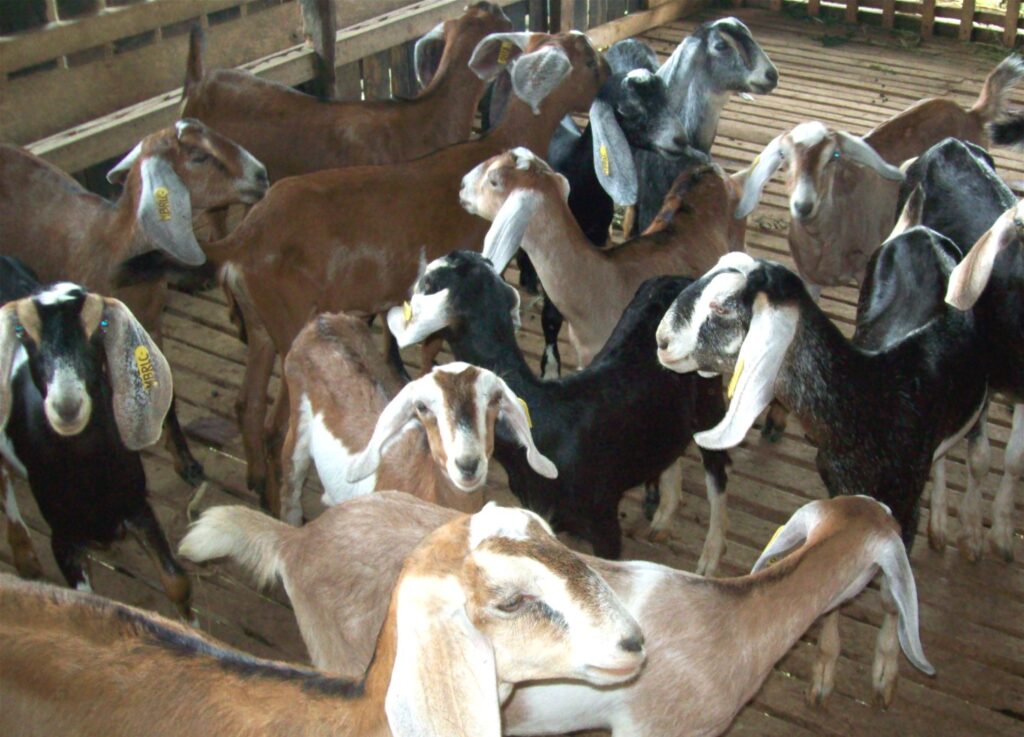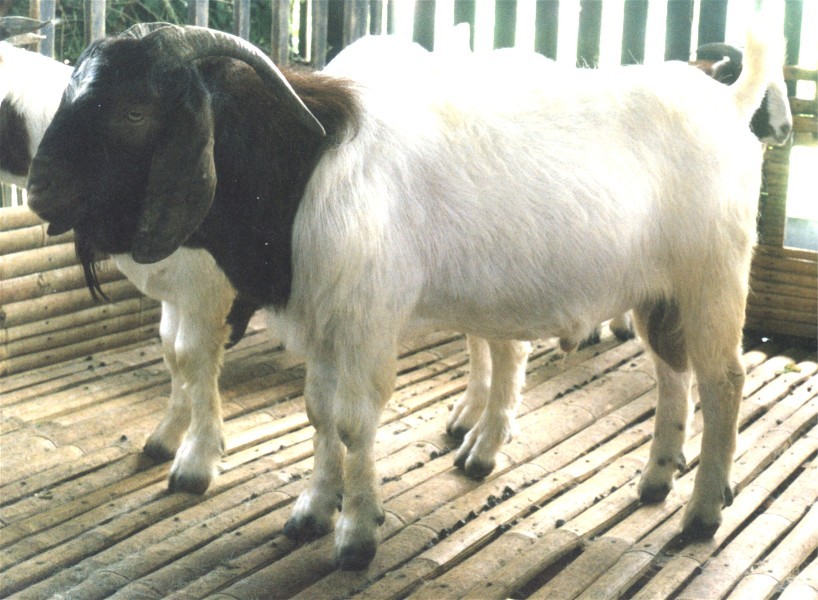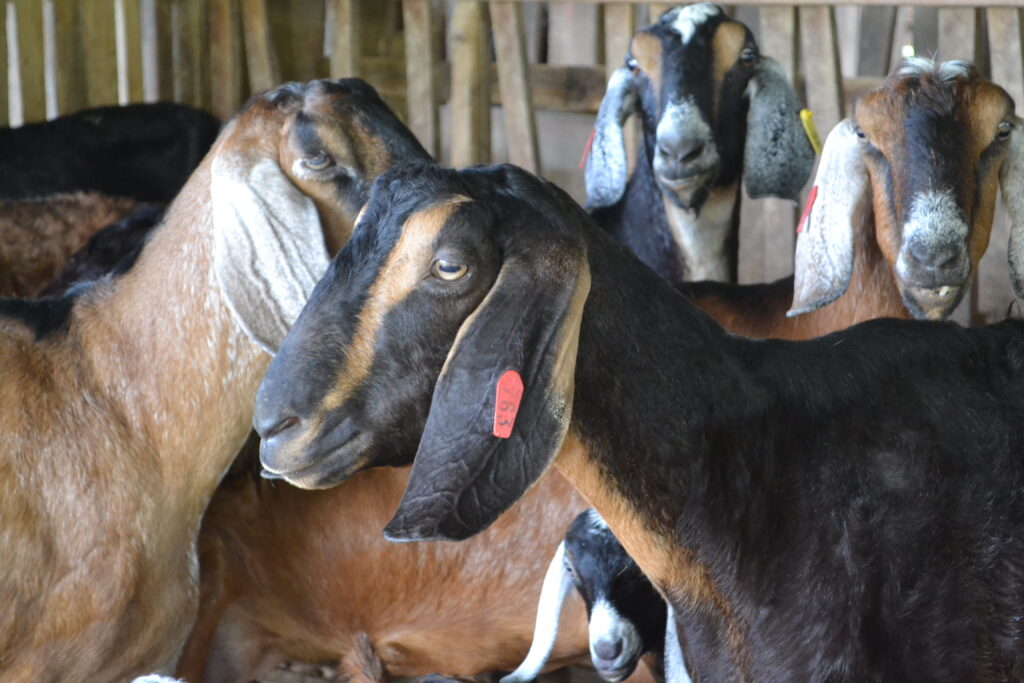Text and Photos by Henrylito D. Tacio
There’s money in raising goats, states a non-government organization based in the southern part of the Philippines. More so, if you breed them yourself.
“We have been raising goats since the early 1970s and we have observed that the demand for the animal has been increasing,” says Jethro P. Adang, the current director of the Mindanao Baptist Rural Life Center (MBRLC) Foundation, Incorporated.
MBRLC is a non-government organization based in the rolling foothills of Mount Apo, specifically in barangay Kinuskusan, Bansalan, Davao del Sur. The center is not only known for its sustainable upland farming systems but also for its goats. In fact, it has earned the moniker as the goat center of Davao del Sur.
“Unlike in other countries, only a few Filipinos raise goats on a large scale,” Adang admits. “If you go around the rural areas, you will see those goats being tethered around. They are left alone to feed themselves.”
But the good thing is: More and more Filipinos are now raising goats. As of January 1, 2021, the total goat inventory in the country was estimated at 3.91 million heads, according to the Philippine Statistics Authority (PSA). “This was 2.5% higher than the 3.81 million heads population in the same period of 2020,” it said.
Of the total goat population, 98.8% were raised in backyards, while the remaining 1.2% were from commercial farms.
Good news: goat population in backyard farms improved by 2.6% from the 2.76 million heads in the same period of 2020. Bad news: stock in commercial farms went down by -7.9% compared with its previous year’s stocks of 51.77 thousand heads.

Goat house 
Raising goats
Most of the goats can be found in Central Visayas, Western Visayas, and Ilocos Region. These three regions accounted for 40.5% of the country’s total goat inventory, according to PSA.
“Goat raising is one of the most simple, low-cost food production projects that a Filipino can get involved in,” Adang says. “Because of the rising cost of commercial feeds these days, goats have become one of the most economical alternatives for meeting the protein needs of Filipino families.”
Unlike other livestock, goats require low maintenance because they eat tree leaves, grasses, weeds, and agricultural by-products. “Goats require less feed than cows and carabaos,” Adang says.
If you want your venture to be successful, you need to increase your herd by breeding the goats yourself.
“Breeding and raising goats is not simply getting one male, also called a buck, and putting it in a yard with female goats, known as does,” says Secretary Emmanuel Piñol of the Mindanao Development Authority (MinDA).
To start a goat farming project, he urges would-be raisers to have a clear understanding of what they really want to produce out from goats: milk or meat?
“If it is milk production, then you have to get good dairy breeds because our local goats do not produce a lot of milk,” Piñol says.
Among the breeds, they could choose as follows: Anglo Nubian, La Mancha, Alpine, Saanen, Oberhasli, and Nigerian Dwarf. “Of these breeds, I would select the Anglo Nubian and La Mancha as they are the most prolific daily breeds, even in Philippine climatic conditions,” he says.
In meat production, there are only two choices: the South African boers and the Philippine native goats. The boers could grow to as much as 100 kilograms. The Philippine native goats, on the other hand, are small and basically mongrels.

Goats 
Boer Goat 
Anglo Nubians
While traditional boers would predictably come out with a white body and dark or redhead, the Philippine native goat colors are unpredictable – white, cream, black, brown, grey, or spotted.
“As a chevon eater, however, I would go for the native goats, especially when slaughtered young, because the meat does not have the gamey smell or anghit in the local language,” Piñol says.
Now, if the farmer has already established what he would like to achieve, he can now choose which breeds to raise to attain his objective. “Just a word of advice though,” Piñol states, “goat breeding and raising is not recommended for impatient people and the ‘virtual’ farmers.”
Between milk and meat, Piñol prefers raising goats for meat. “However, there is still a need to upgrade our native goats and really establish a distinct genetic line for uniformity of meat quality and phenotypal manifestations,” he suggests.
According to him, there is a need to improve its size for more meat – from the current 15 to 25 kilograms to at least 40 to 50 kilograms. He doesn’t recommend using boer bucks to upgrade the native goats.
“Based on our experience, we lost many native does during birthing because the half-boer kids are just too huge to pass through the vagina,” Piñol says.
To upgrade the native goats, he suggests going through the process of crossing the native does with pure Anglo Nubian or Anglo Nubian-native cross to produce larger female goats. “The explanation to this is that while Anglo Nubians would grow large, the kids are actually lean and bony at birth, thus the native female goats could push them out during the kidding process,” Piñol says.
The MBRLC, however, suggests raising goats for milk. Research conducted at the center has shown that the volume of milk produced from a purebred milking doe is about 3-4 liters per day (including the milk fed to the kids), which is more than the national average production of 2 liters.
By raising goats, the country can develop its own dairy industry. “Popularizing goat milk consumption nationally would drastically cut the huge amount of foreign exchange being spent by the country annually to fill domestic demand for milk and its by-products,” Adang says.
Meanwhile, researchers from the University of Southern Mindanao (USM) in Kabacan, North Cotabato, have found methods to breed goats all year round – even during those months when the animals are not “in heat”?
“Goats are known to be seasonal breeders,” explained Dr. Carlito B. Sanchez, who headed the study. “They come to heat only during cool months when the day length is short. In the Philippines, this is usually between September to February. For goats to give kids year-round, they need to be ‘in heat’ even during summer.”
Experts call this “out-of-season” breeding. “This kind of breeding is of interest to both dairy and slaughter goat owners because it reduces seasonal fluctuations in the herd’s milk and meat production,” he said.
Because of this, the USM researchers came up with alternative off-season “green” solutions in manipulating estrus in goats. Estrus is the period of sexual excitement, at which time the female accepts the mating with the male.
“Such methods sit well with the Halal system of goat production under which use of chemical hormones is not acceptable,” Dr. Sanchez said. Among the Muslims, the unnatural breeding of goats is considered “haram.”
“Green solutions ensure sustainability of production to cater to the needs of Muslim Filipinos, especially during festivities like Eid’l Fitr and Eid’l Adha,” Dr. Sanchez said.
The USM researchers have developed three “green” methods in estrus synchronization or heat induction in goats: photoperiodism or light effect, male/buck effect, and dormitory effect.
The goats are kept under natural photoperiod. Their nutritional levels are adjusted to meet maintenance requirements. The goats are allowed to graze during the day if the climatic condition is favorable. In addition, they are given free access to water and mineral blocks. At night, they are confined.
The goats for breeding are identified by placing ear tags or neck tags. Herding is done daily at around 10 am. At 6 pm., they are brought back to their pens.
“Strategic deworming is followed with the first dose given a month before the onset of the rainy season and succeeding dose given as the fecal egg count exceeds 100 eggs per gram in mixed infection,” Dr. Sanchez said. “Ivermectin injection is also given to the animals to control external parasitism.”
The estrus activity in goats is observed three times a day: at 5 am, 12 pm, and 6 pm with one-hour observation for each period. “Doelings that exhibit a tail-flagging response and stand for mounting are considered to be in estrus,” Dr. Sanchez said.
According to Dr. Sanchez, the light effect method consists of controlling exposure to daylight to mimic short-day periods. Does are confined in pens where they encounter a shorter period of exposure to light.
“As most goat breeds are photosensitive with respect to reproduction, the likelihood of their breeding is strongly influenced by how long or how short the days are,” Dr. Sanchez explained.
Goats are described as short-day breeders. “This means that the doe shows evidence of desire to breed when day length grows shorter,” he surmised. “A long day photoperiod consists of 16 to 18 hours of light exposure. In contrast, a short day photoperiod is characterized by eight hours of light followed by 16 hours of darkness.”
To maintain good health, the goats are housed in a building with adequate ventilation and regular cleaning. The pens are covered with plastic curtains from 4 am to 8 am to achieve the effect of light. “This gives a total darkness of 14 to 10 hours,” Dr. Sanchez said, adding that in this method, the duration of estrus from the onset of behavioral estrus to standing estrus among goats ranges from 12 to 14.6 hours. The duration of behavioral estrus from standing estrus to the end of estrus ranges from 14.5 to 19.83 hours.
“Overall, the total estrus period ranges from 27 to 34 hours,” he said. “The number of days to breed is from 10.25 to 21.5 days and the conception rate is from 66.67% to 100%.”
The second method – the male/buck effect – requires a minimal amount of labor and cost, according to Dr. Sanchez.
“The initiation of behavioral estrus in the doe is triggered by olfactory, behavioral and visual stimuli which result in ovulation of does,” he said. As such, “activities around the doe perceived by her brain can trigger excitement in the does affecting estrus. These include exuberant vocal expression of the buck and the odor emitted by the buck through its musk glands located behind the horn area that secretes strong odors.”
In this method, the bucks are isolated for three weeks before they are allowed to join the does. “The buck joins the herd of female goats for 12 hours each day,” Dr. Sanchez said.
This method shows the duration of estrus from the start of behavioral up to the standing estrus from six to 12.5 hours. On the other hand, the duration of behavioral estrus from standing estrus to the end of estrus is from 11.5 to 13.88 hours. All in all, the estrus period ranges from 17.5 to 26.38 hours.
The number of days to breeding is from 5.66 to 16.67 days, while the conception rate is from 83.33% to 100%, Dr. Sanchez said.
In the third method – the dormitory effect – social interactions play an important role in estrus induction among goats. “When does start cycling, the anestrous group will start to cycle too,” Dr. Sanchez said. “Rest may respond within 14.5 to 33.5 days and the conception rate is from 50% to 100%. The minimum number of keeping goats that can induce estrus is two heads of does.”

